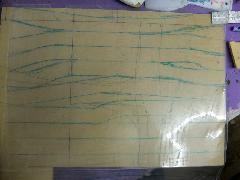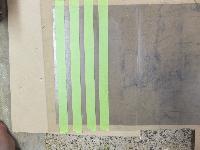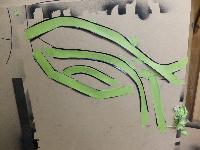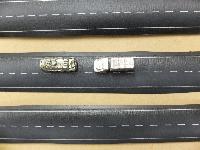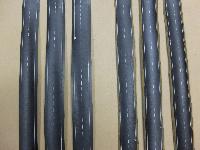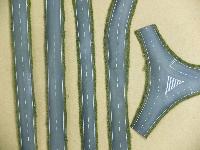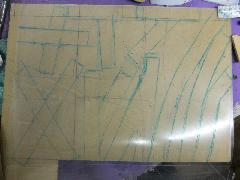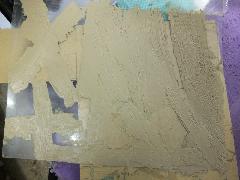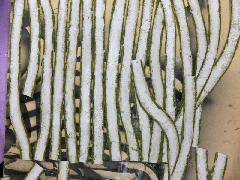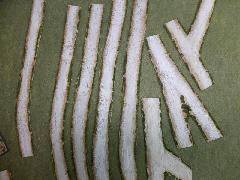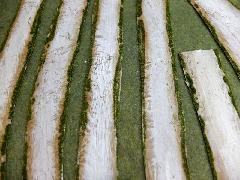Materials list
Thin plastic sheets. I use "Copy Safe Pockets" which are a thin plastic sleeve used for holding documents and available from Staionery shops. They come in A4 (letter) and larger A3 size which is great for longer pieces.
Masking tape about 24-25mm wide. "3M Masking tape 233+ Premium Masking Tape" is the stickiest I could find locally. You dont want the tape to peel off so buy some good stuff. larger widths are also useful for curves or highways
A tube of Sealer (caulk used for bathrooms and DIY. For this a coffee coloured caulk was used as it saves a lot of hassle painting it.
Cheap paint for the base colour. I use a browny-ochre poster paint as that is my preferred ground colour
Cream paint (I mixed some white and yellow paint together) for drybrushing the bases
Medium grey paint. I use Tamiya paint for this as I spray it through an airbrush.
Flock (I use a mix of static grass and woodlands scenics)
A good quality white gel fine tip art pen. Mine is a "Artline" brand and it will cover balck paint very well.
Airbrush or some weathering powders.
PVA Glue
Black spray paint
A sharp knife (with new blade), a metal straight edge, some draughting curves, paint brushes, marker pen, sisscors
A large old piece of board (MDF or similar)


